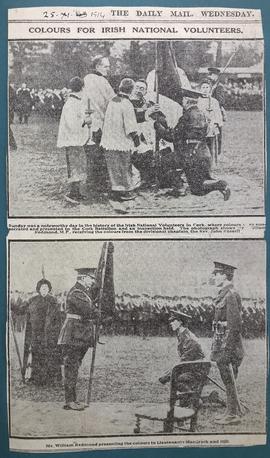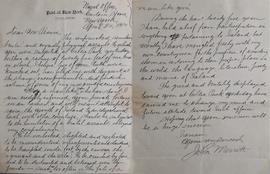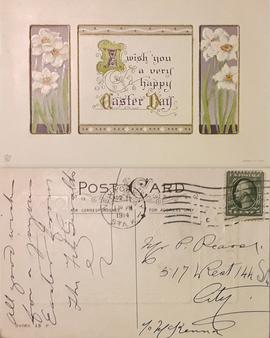Church of St. Mary of the Angels
- IE CA CS/2/2/1
- Part
- 1685-1914
Part of Irish Capuchin Archives
The present-day St. Mary of the Angels on Church Street is the third chapel to be built on this site. Roscommon House, which housed the original late seventeenth-century chapel, stood on ground situated to the front of the modern church. This first church, already repaired in 1736, was taken down and a slightly larger one erected in 1796. The Irish Capuchin Archives holds an eighteenth-century account book of the Dublin Capuchin community which seems to be have been used for the registering of the names of subscribers towards the rebuilding of the chapel and which contains the names of benefactors. Unfortunately, the account book bears no date but it may refer to either the repair work of 1736 or to the building of the 'second church' in 1796 (See CA CS/3/1/1). The plot of ground on which the original church stood was acquired in a lease of 4 August 1826 from Thomas Pakenham, 2nd Earl of Longford, and John Vesey, 2nd Viscount de Vesci to Fr. Bonaventure Delaney OSFC. This lease described the plot as being ‘formerly in the possession of James Topham and afterwards in the tenancy of Robert Clements … and whereupon a Roman Catholic chapel is now built’. (See CA CS/2/2/1/2). Another lease of 1834 dealing with property which adjoined the church and which is now incorporated into the grounds of the present-day Friary describes the plot as being bounded on the south side by what was formerly known as Roscommon House, ‘now a chapel and chapel yard’. It appears that damage caused to the 1796 Church by the great storm of January 1839 may have given added impetus to the building of a larger edifice. At any rate, the Capuchin friars were finding their church inadequate and were considering building a larger structure as well as an adjoining friary residence for the religious.
A major difficulty confronting the friars in the matter of building a new chapel was the lack of space on Church Street on which to expand. Although the site of the church was sold in fee simple in 1875 to Fr. Daniel Patrick O’Reilly OSFC (1831-1894) for an extended period of time no further ground could be procured. In 1861, Fr. Lawrence Gallerani OSFC, an Italian friar, was appointed Commissary-General of the Capuchins in Ireland and quickly set about building a new friary and church in Dublin. For some time, Fr. Gallerani gave consideration to building a new chapel on North King Street. However, the Capuchins went no further than establishing a small friary on the site of 49-50 North King Street and plans to build a church on an adjoining site on this street came to nothing. By the late 1860s, the difficulties experienced by Gallerani in securing a plot of ground-space adjacent to the existing chapel on Church Street had been overcome as in 1867 some property was acquired from Jameson & Sons. The friars lost no time in laying the groundwork for a new church. The foundation stone was laid on 12 June 1868 by Archbishop Paul Cullen. A significant portion of the church was built by direct labour with a clerk of works supervising the tradesmen in carrying out the instructions of the architect, James Joseph McCarthy (1817-1882). The façade of the church was not completed until 1882. The Church of St. Mary of the Angels was formally dedicated on 4 October 1882 by Cardinal Edward McCabe, Archbishop of Dublin. Aside from deeds and leases relating to the St. Mary of the Angels site, this section also contains documents recording legal declarations and obligations in respect of the construction of the church in the latter half of the nineteenth century.




